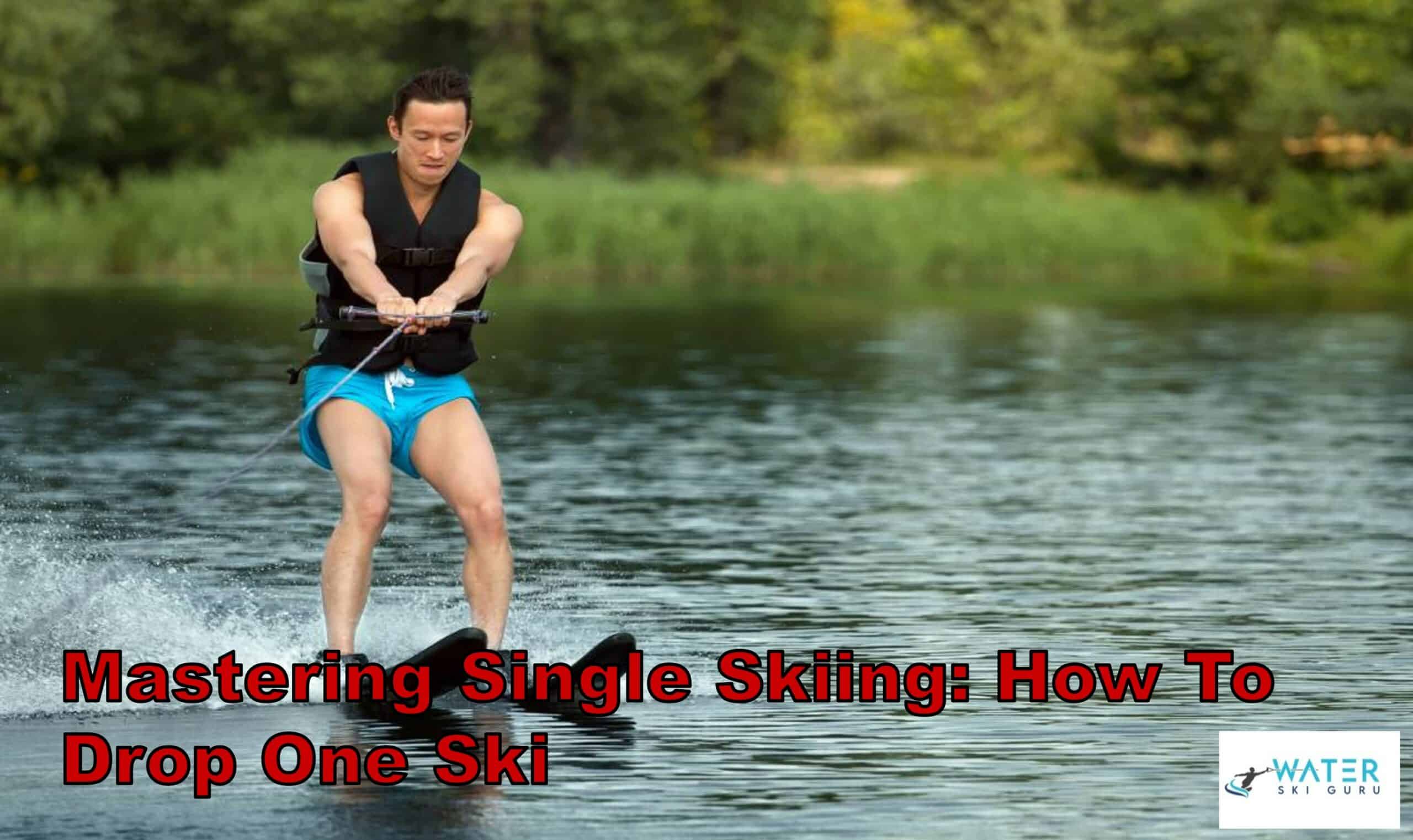As a beginner skier, I was always intimidated by the thought of transitioning from double skiing to single skiing. The idea of having to learn the deep water start seemed daunting, and I wasn’t sure if I was ready for it. However, dropping one ski turned out to be the perfect way for me to dip my toes into single skiing without feeling overwhelmed.
In this article, I’ll share with you the key points of dropping one ski and how to do it successfully. We’ll cover the benefits of this technique, common mistakes to avoid, and tips for finding balance. With a gradual and gentle approach, you’ll soon be on your way to mastering single skiing and feeling confident on the water.
So, let’s dive in and get started!
Transitioning to Single Skiing
I love double skiing, but I’m ready to take my skills to the next level and transition to single skiing by dropping one ski. It’s the perfect way to experience the differences in balance and steering between double and single skiing without having to learn the deep water start right away.
Finding balance is key to dropping one ski successfully. Practicing lifting one ski out of the water helps in finding balance and deciding which ski to drop. The ski to drop depends on which foot will be forward.
Once you’ve decided which ski to drop, the binding on the opposite ski should be loosened. Then, the ski should be dropped smoothly by flexing the knee and pointing the toes down. The back foot should be planted slowly and gently, and it’s important to commit to skiing on one leg and not rushing to put the back foot in the binder.
The back foot should be landed behind the front foot, with the knee of the free leg tucked in. No weight should be put on the back foot while feeling one’s way into the binder. With these tips, you’ll be well on your way to mastering single skiing by dropping one ski.
Benefits and Mistakes
Learning to ski on just one leg has its advantages, such as experiencing the differences in balance and steering, but one common mistake to avoid is losing the ski that was dropped.
Dropping one ski is a shortcut to single skiing without having to learn the deep water start. However, it’s important to remember that the dropped ski needs to be retrieved, and it’s recommended to have a helper nearby to assist with this.
To avoid losing the dropped ski, it’s important to practice finding balance by lifting one ski out of the water. This will also help in deciding which ski to drop, depending on which foot will be forward.
Additionally, it’s important to take a gradual and gentle approach to dropping one ski, focusing on smoothly flexing the knee and pointing the toes down to release the ski. By avoiding common errors and taking the time to find balance, mastering single skiing can be an exciting and rewarding experience.
Tips and Steps
Don’t be intimidated by the thought of skiing on just a single leg, as with a few helpful tips and steps, you can smoothly transition from double to single skiing.
One of the most important things to consider when dropping one ski is finding balance. It’s essential to practice lifting one ski out of the water to get a feel for the differences in balance between double and single skiing. This will also help you decide which ski to drop based on which foot you want to have forward.
Once you’ve found your balance and decided which ski to drop, it’s important to follow the proper steps. First, loosen the binding on the opposite ski to allow for a smoother transition. Then, drop the ski smoothly by flexing the knee and pointing the toes down.
Plant the back foot slowly and gently, and commit to skiing on one leg before putting the back foot back in the binder. When landing the back foot, make sure to tuck the knee of the free leg in and avoid putting any weight on the back foot while feeling your way into the binder.
With these tips and steps, you’ll be on your way to mastering single skiing in no time.
Frequently Asked Questions
How long does it typically take to learn how to drop one ski and ski on one leg?
Learning to drop one ski and ski on one leg varies by individual progress. Tips for faster progress include practicing lifting one ski for balance and gradually committing to skiing on one leg. Benefits of learning single skiing include experiencing different balance and steering and avoiding learning the deep water start.
What are some common mistakes that people make when skiing on one leg?
When skiing on one leg, common mistakes include losing the dropped ski, rushing to put the back foot in the binder, and putting weight on the back foot too soon. Tips for improvement include practicing balance and committing to skiing on one leg.
Is it necessary to have someone retrieve the dropped ski, or can it be retrieved by the skier themselves?
Retrieving a dropped ski solo can be dangerous due to the risk of losing balance and getting injured. Tips for improving balance on one ski include practicing lifting one ski and gradually transferring weight.
Can dropping one ski be done while already skiing, or does it need to be done from a stationary position?
Yes, dropping one ski can be done while skiing, but it requires mastering skiing techniques and one ski tricks. It’s important to maintain balance and control while dropping the ski and smoothly transitioning to skiing on one leg.
Are there any safety precautions that should be taken when dropping one ski and skiing on one leg?
When dropping one ski, safety tips include loosening the binding on the opposite ski, landing the back foot behind the front foot, and not rushing to put the back foot in the binder. Benefits include experiencing differences in balance and steering.

